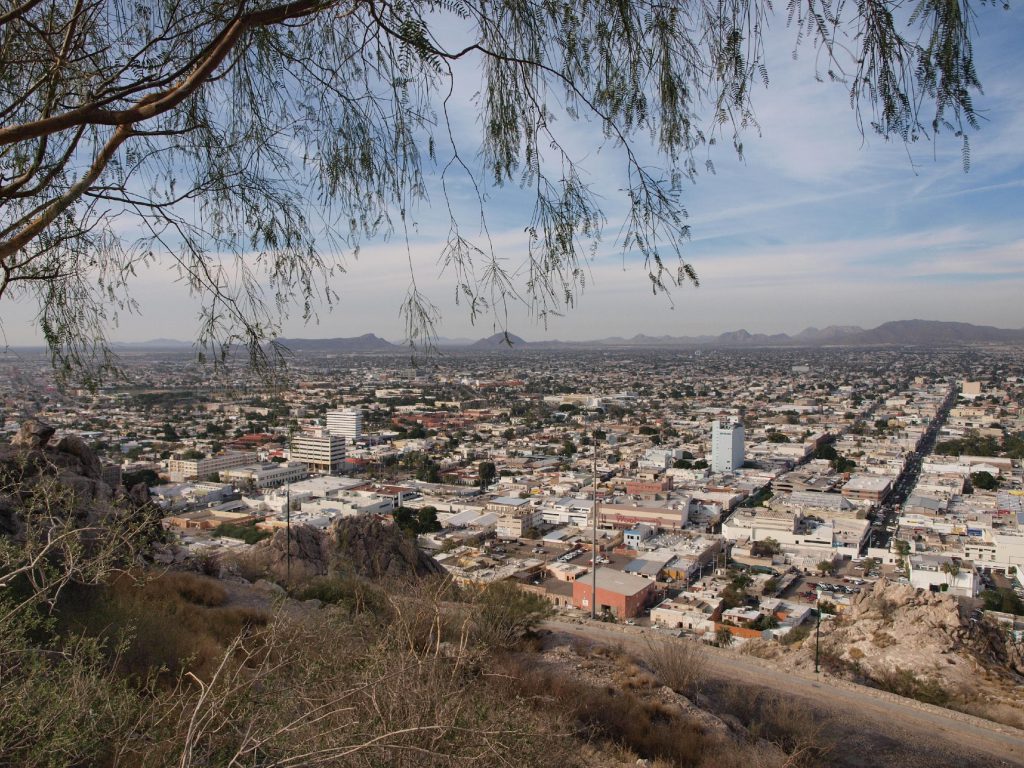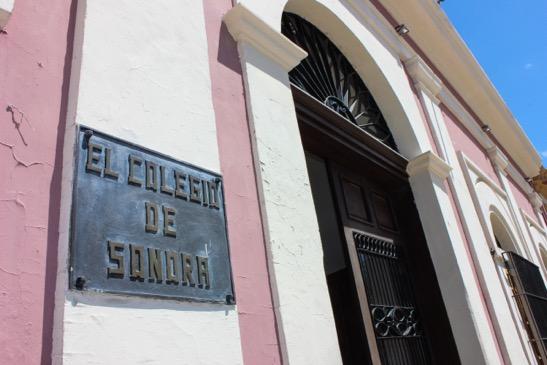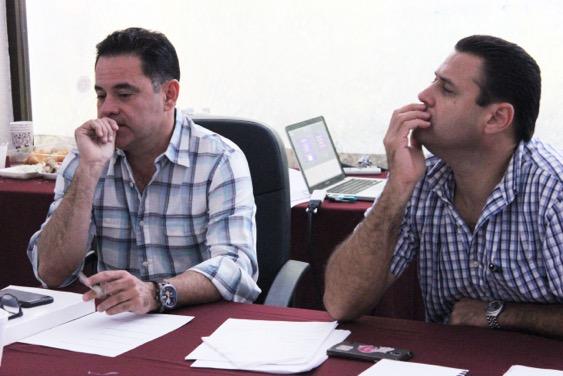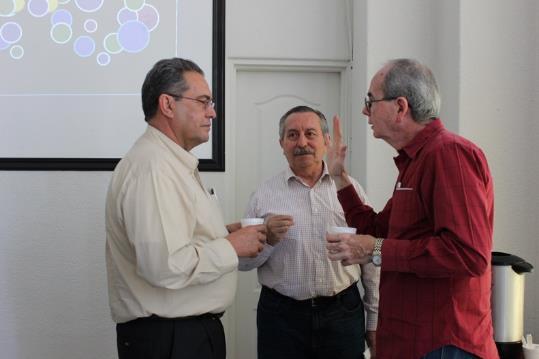
Hermosillo, the capital of the northern Mexican state of Sonora, has 725,000 inhabitants and is a large, expanding economic and political powerhouse in the region. The city, which has seen a 50 percent population increase since 1995, is critically short of water, reaching deep into its rural hinterland to meet its growing needs.[1] This search for water often encroaches on local, rural, traditional, and frequently indigenous ways of managing its water and land resources, and restricts development of the local and regional economy.


The earliest large-scale approach to “secure” water supplies for Hermosillo was through the construction of the Abelardo L. Rodriguez dam, built in 1948 during the administration of the powerful bureaucracy of the Ministry of Hydraulic Resources (SRH). The dam was intended to provide water in the long-term for the fast-growing city. However, water mismanagement combined with a prolonged drought led to the drying up of the dam’s reservoir at the end of the 1990s. In response, several measures were taken by the local water authorities, such as imposing scheduled rationing of supply, or tandeos, throughout the city; the drilling and installation of groundwater wells around the perimeter of the urban area; and the purchase of water from ejidos (communal agricultural lands) in rural communities of nearby watersheds.
More recently, the city initiated a scheme to transfer about 30 million cubic meters of water from the neighboring Yaqui River basin through the Aqueduct “Independencia,” which aroused opposition and anger from agricultural producers and Yaqui native people in the basin. All these approaches taken by the municipal water managers have been surrounded by a sense of distrust from the public, social conflict, allegations of corruption and lack of transparency in decision making, and uncertainty in the long-term impacts on the social-ecological systems of the affected basins. With a water utility that was decentralized from the state government and started operations in the 2000s, Hermosillo has yet to solve its most pressing issues of long-term water supply, self-sustainable water tariffs, wastewater treatment, and other water quality issues.

In a recent approach to help come to grips with future needs and available resources, the municipality has turned to the expertise nurtured by the Lloyd’s Register Foundation-funded International Water Security Network (IWSN) and the leverage provided by the Inter-American Institute for Global Change Research-supported AQUASEC Center of Excellence for Water Security.
At El Colegio de Sonora (COLSON) in Hermosillo, a team led by IWSN-IAI researchers and practitioners Drs. Nicolás Pineda and Rolando Díaz is working with local water officials to devise negotiated solutions to contested futures. Aiding the initiative are three University of Arizona (UA) associates, all at the Udall Center for Studies in Public Policy in Tucson, Arizona: Dr. Adriana Zuñiga-Terán, an IWSN-supported postdoctoral research associate; América Lutz-Ley, a Colegio de Sonora graduate and UA PhD candidate; and Yulia Peralta, also a UA PhD student. All three receive support from IWSN and IAI and work under the supervision of IWSN-IAI researchers Christopher Scott and Robert Varady.

One approach to facing an uncertain future is to adapt strategies developed by IWSN-IAI–leveraged expert Ralph Marra, a hydrologist and retired chief planner for Tucson Water, the water utility in the city of Tucson, Arizona. Marra, who has done similar work with IAI partners in Mendoza, Argentina, relies on a strategy known as scenario planning. Via a series of carefully-planned workshops with key decision makers and stakeholders, Marra offers his experience in water management planning and guides participants through exercises designed to confront possible future scenarios – from improbably dire situations to equally unlikely sanguine ones. This technique, which relies on science-policy dialogues and durable communities of practice, has gained currency and is used by numerous cities in the United States and elsewhere. This type of scenario planning is one of several engagement tools used by AQUASEC in several semi-arid regions in the Americas: Sonora, Mexico; Mendoza, Argentina; and Arizona, USA.

On 8-9 April 2016, at the invitation of the Hermosillo water utility, Agua de Hermosillo (AguaH), Marra and the three IWSN-IAI-supported UA social scientists travelled to Hermosillo (five hours south of Tucson; see map) to conduct two facilitated, bilingual scenario-planning workshops with local water managers, stakeholders, and IWSN-IAI scientists Pineda and Díaz and their team. The first workshop was hosted by COLSON and was attended by approximately 60 people from that institution, as well as from the state water agency and the local water utility, AguaH. The second workshop was held at the facilities of AguaH and was attended by 20 water professionals from that organisation. Aiding the simultaneous translation and the overall facilitation of the workshops was Javier Mejia, a master’s student at COLSON.

colleague at the scenario planning workshop
This event offered a rare opportunity to observe the progress of a real-world scenario-planning exercise whose outcome could help determine the future of Hermosillo’s water crisis. The exercise revealed a glimpse of what scenario planning is and suggested some potential benefits this approach could bring to water management in Hermosillo.

Hermosillo
Should the local water utility decide to pursue this type of strategic planning, the overall effort would take approximately six months, during which there would be a series of two workshops, separated by a period of two months. In this process, a selected group of stakeholders would come together to provide their individual perspectives on the water issues of the region, and together visualize at least four future scenarios with a timeframe of the next 30 years. These scenarios would attempt to consider the breadth of possible outcomes, including best-case and worst-case scenarios.

Once the scenarios are identified, the stakeholders, with the help of the facilitators, would identify the set of robust and low-regret action plans and programs that could be implemented within the next five years (and that would respond to all of the four scenarios). This way, no matter how the future unfolds, the water utility would have action plans in place that are designed to respond to a variety of future conditions.

America Lutz, and Adriana Zuñiga-Terán
This type of planning approach originated in the private sector and is currently used by most of the top Fortune-500 companies. The approach is basically a qualitative study on the potential range of possible futures and enables organisations to do long-term planning that is not based on specific projections. This approach is now being used in the public sector to better prepare for contending with uncertainty.
The two Hermosillo workshops in which IWSN-IAI-supported researchers Zuñiga-Terán, Lutz-Ley and Peralta recently participated introduced the concept of scenario planning to municipal and state water officials, and to the local academic community. This event also reached the general public through the local media. Bertha Yañez, a local radio host for the Radio Sonora programme La Conversada (The Conversation), interviewed Zuñiga-Teran, Lutz-Ley, and Peralta about the scenario planning approach and its potential benefits to water management in the city.
Given the rapid changes and complex problems faced by the Hermosillo, strategic planning that considers a range of future scenarios with the input of stakeholders and experts in the field shows considerable promise to avoid the problems of the past and to develop action plans that are responsive and meaningful in the future.
*
[1] Pineda, Pablos N. 2006. Dar de beber a Hermosillo. In Barkin, D. (Ed), La gestión del agua urbana en México, pp. 235-248. México: Universidad de Guadalajara, Universidad Autónoma Metropolitana and Unidad Xochimilco.
